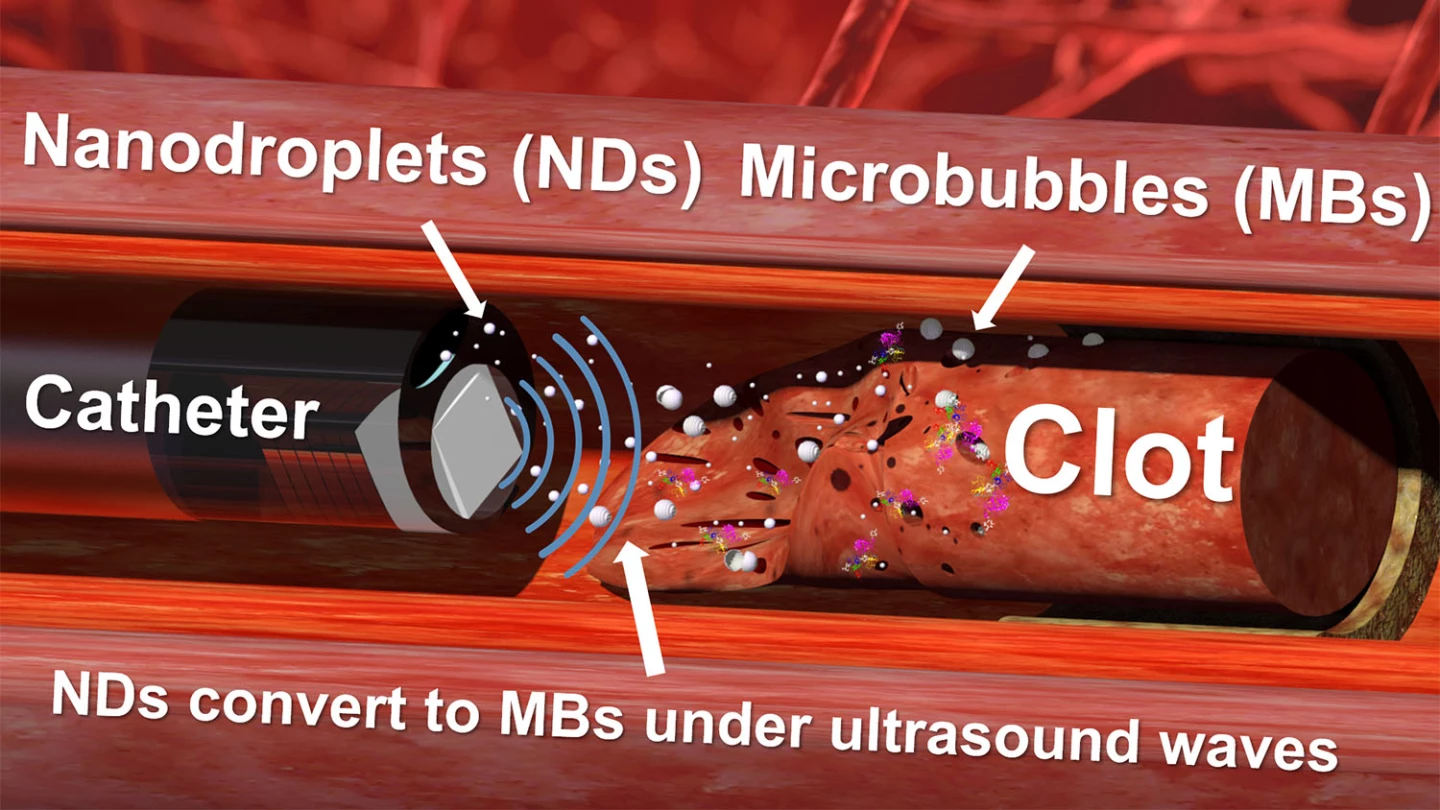Blood clots can be dangerous, and blood thinning drugs aren’t always enough to clear them out. Now, researchers at North Carolina State University have demonstrated an ultrasonic “drill” that can break clots apart with the help of tiny nanodroplets.
The new work builds on technology the team created a few years ago. In 2017 the NC State researchers described a new type of blood clot buster – an ultrasound transducer that could be inserted into a vein, where it directs low-frequency ultrasound towards a clot. A major advantage, they say, is that these pulses don’t harm the surrounding blood vessels.
Now the team has added a new tool to the technique: nanodroplets made up of lipid spheres filled with liquid perfluorocarbons (PFCs). These nanodroplets are small enough to penetrate blood clots, even dense ones, and once there they can begin to destroy the clot from the inside out. The PFCs in them have very low boiling points, meaning that when they’re hit by the ultrasound waves, the liquid turns into a gas, forming microscopic bubbles.
As the ultrasonic pulses continue, these microbubbles begin to oscillate rapidly, destroying the structure of the clot like a swarm of tiny jackhammers. Not only does that break apart the clot, but it could help anti-clotting drugs get deeper inside to do their work.

The team tested out several combinations of treatments in lab models, including drugs, microbubbles and ultrasound, or nanodroplets and ultrasound. Each test ran for 30 minutes.
“We found that the use of nanodroplets, ultrasound and drug treatment was the most effective, decreasing the size of the clot by 40 percent, plus or minus nine percent,” says Xiaoning Jiang, corresponding author of the study. “Using the nanodroplets and ultrasound alone reduced the mass by 30 percent, plus or minus eight percent. The next best treatment involved drug treatment, microbubbles, and ultrasound – and that reduced clot mass by only 17 percent, plus or minus nine percent.”
The team says the technique would be best suited to retracted blood clots – those that form over longer periods of time and are usually denser, making it hard for drugs to penetrate. The next steps will involve testing in animals for safety and effectiveness against deep vein thrombosis.
The research was published in the journal Microsystems & Nanoengineering.
Source: North Carolina State University





